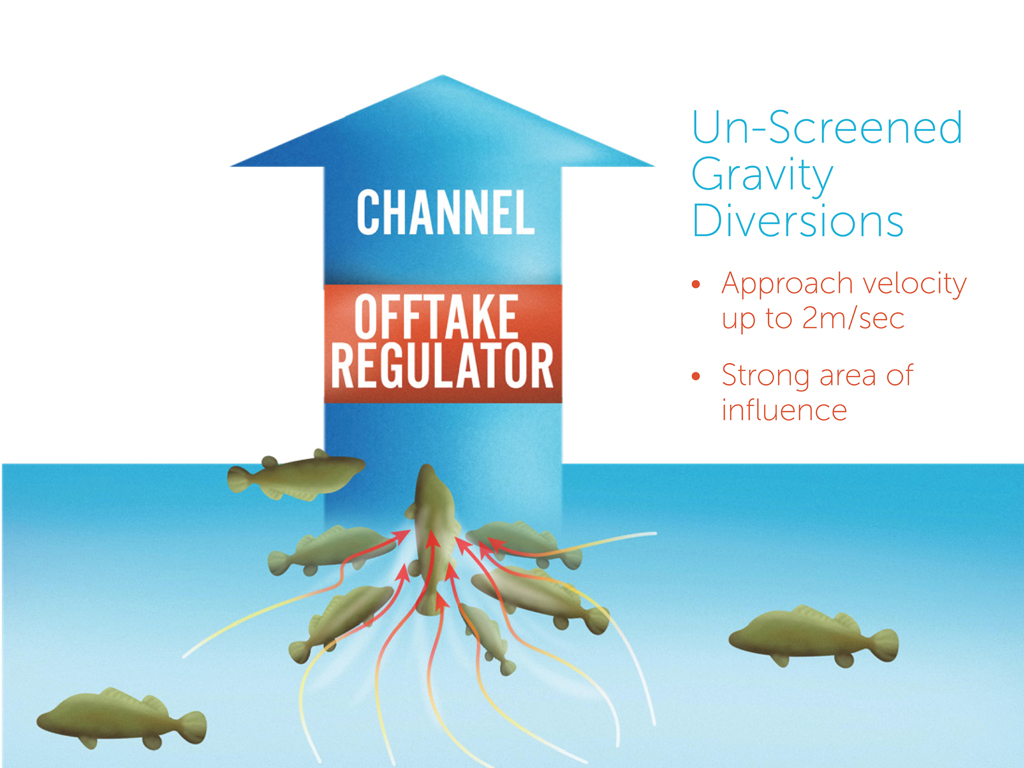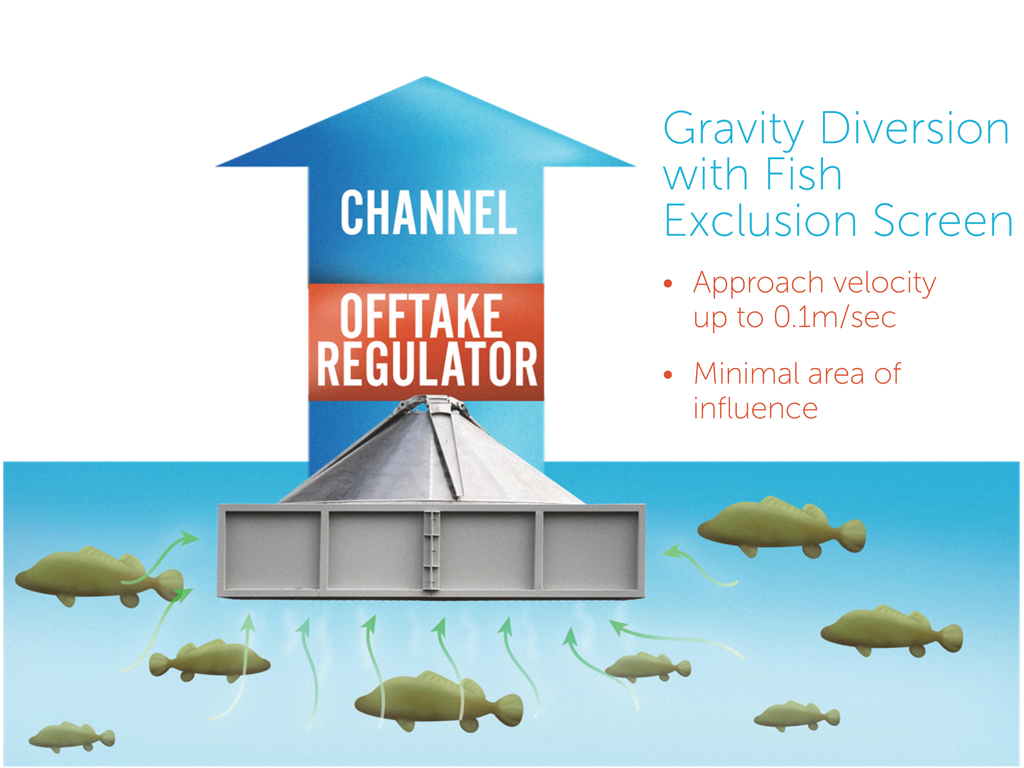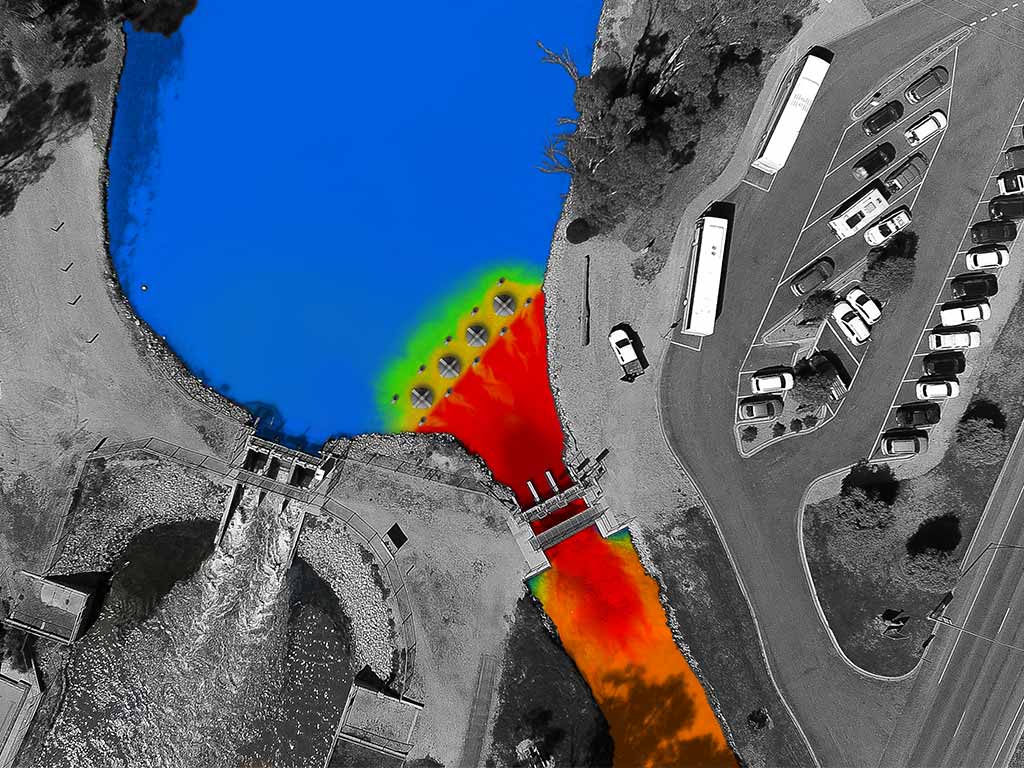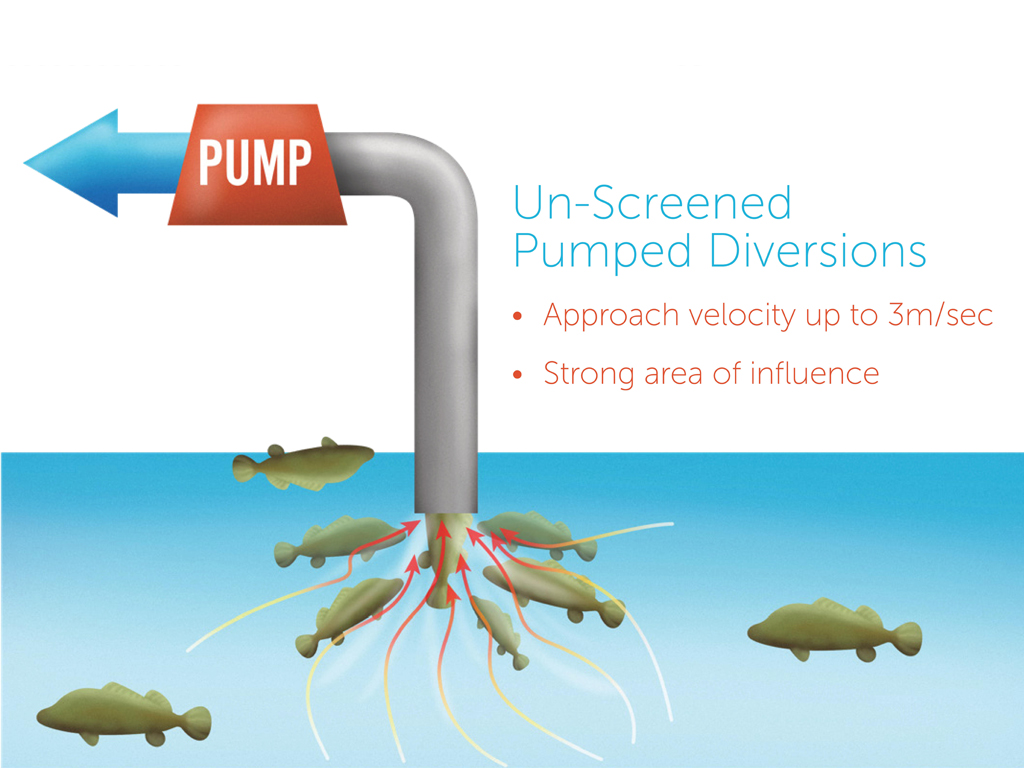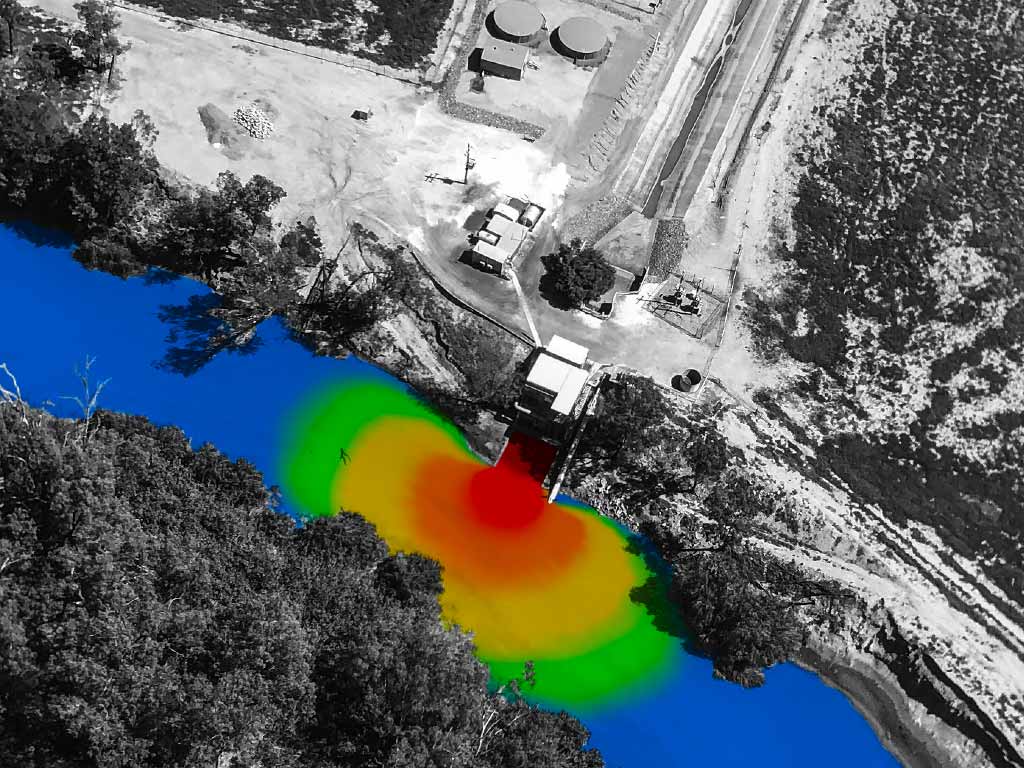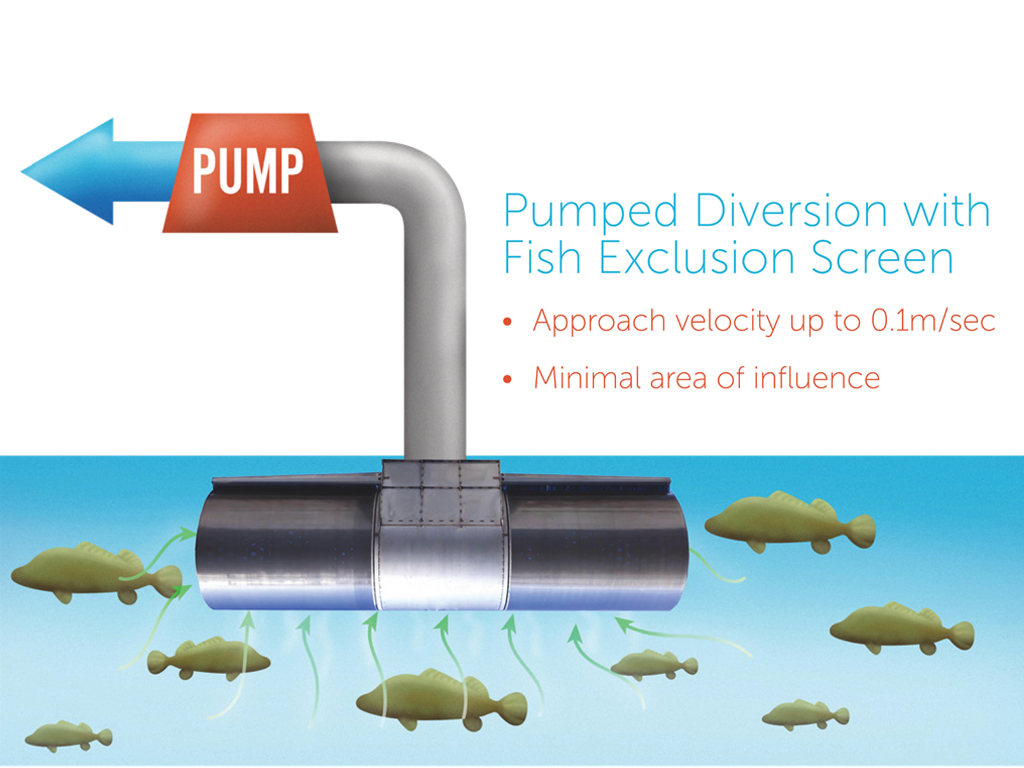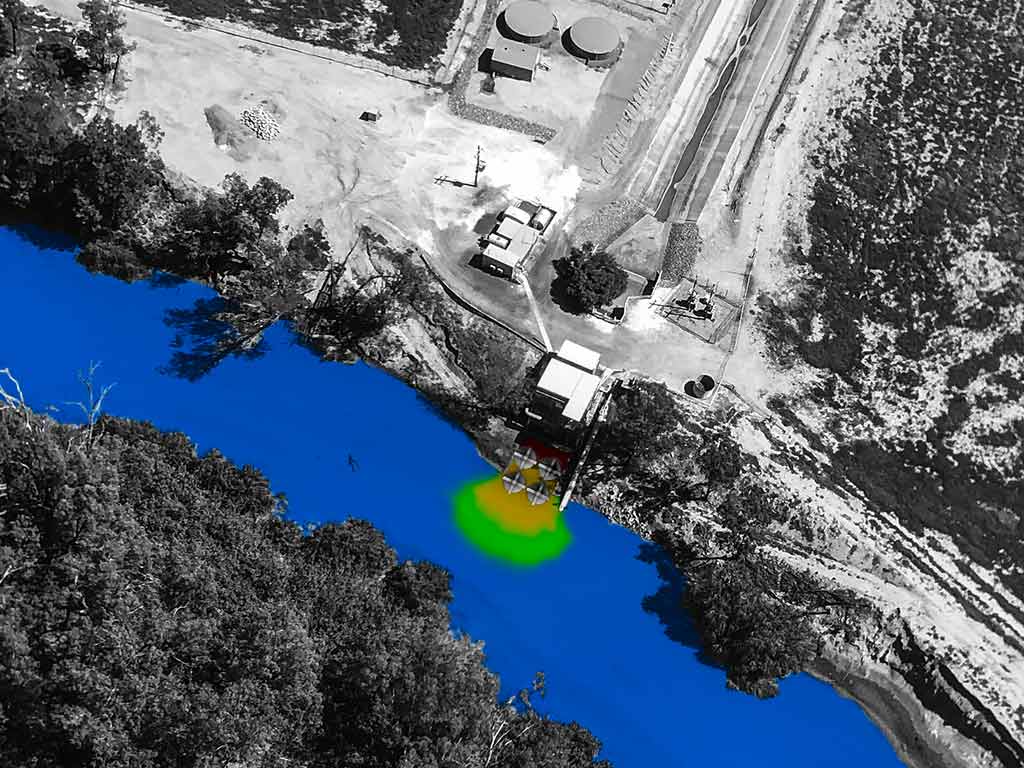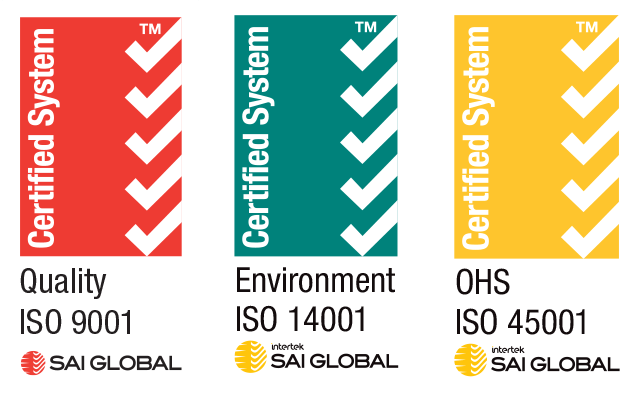Why is it so important to reduce velocity at the point of diversion?
The primary way a Fish Exclusion Screen (FES) protects fish is by reducing velocity at the point of diversion.
A fish exclusion screen is designed with enough screening surface area to reduce the maximum approach velocity to a safe level (recommended 0.12m/s @75mm from the screen surface, although this will vary depending on the fish type being protected and the local governing authority).
This means that the suction force around the screen ‘area of influence’ is significantly reduced.
A fish swimming 100mm from a well-designed screen’s surface will not even know water is being extracted whether that be at 1ML/d (0.011 Cumec, 12 l/s) or 10 000ML/d (120 plus Cumec, 120 000 l/s) diversion volume.
There are two key screen design criteria that support the 0.12ms (low) velocity principle. The first is that the nominated velocity is evenly distributed over the whole screen surface and secondly to maintain the specified velocity the entire screen surface must remain clean.
If the screen becomes blocked, decreasing available area, approach velocity will increase becoming non-conforming potentially impinging or entraining fish into the diversion.
To ensure even velocity over the screen surface an internal diffuser is required. The design of the diffuser changes significantly between screen types and can also be significantly impacted by the installed conditions. Diffuser design should be confirmed by CFD modelling and type tested in installed conditions using a high quality velocity meter to verify its performance.
All designs are theoretical until proven in their specific operating environment over time. Each screen location will be unique in the type of debris it will have to effectively manage and the surrounding hydraulic conditions it has to operate in. Once installed screens should be regularly inspected to confirm the cleaning system is working effectively.

